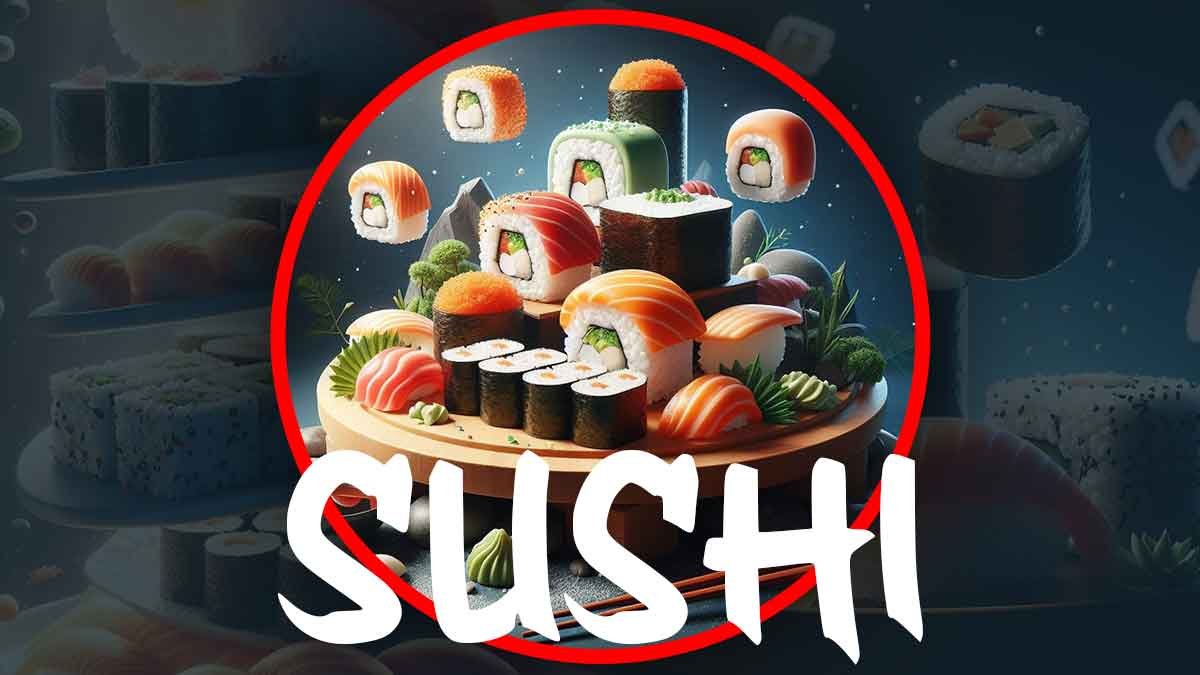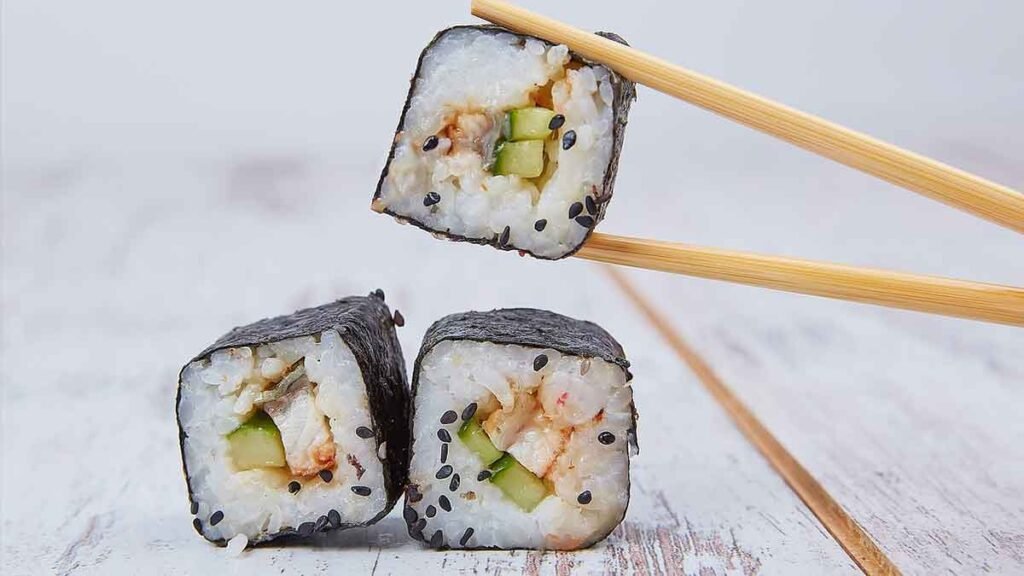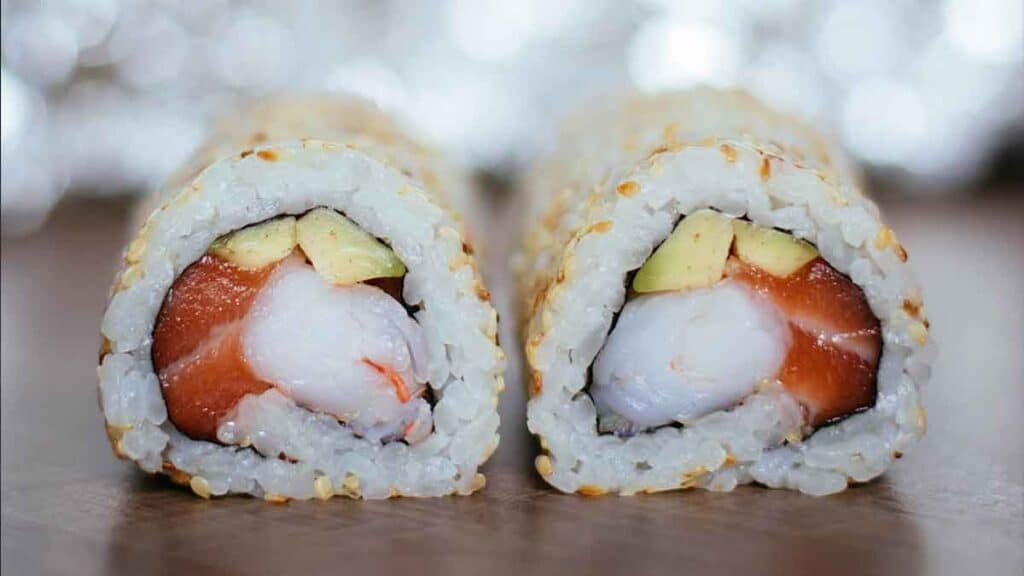
Sushi: A Journey Through Culinary History and Delectable Variety
Sushi, with its delicate rice morsels adorned with glistening seafood and vibrant vegetables, has transcended its Japanese roots to become a global culinary phenomenon. But what exactly is sushi? Where did it come from? And why is it so popular?
Table of Contents
A Symphony of Flavor and Texture: What is Sushi Made Of?
Sushi, in its simplest form, is a combination of seasoned vinegared rice (“shari”) and various toppings, known as “neta”. While many associate sushi with raw fish, the neta can encompass a diverse range of ingredients, including:
- Seafood: Raw fish like tuna, salmon, and yellowtail are widely popular, but cooked seafood, shellfish, and even eel can also be featured.
- Vegetables: Pickled ginger, julienned vegetables like carrots and daikon, and even avocado in California rolls add freshness and contrasting textures.
- Egg: Tamagoyaki, a sweet rolled omelet, is a classic sushi topping.
- Tofu and other plant-based options: Vegan and vegetarian sushi is becoming increasingly popular, with ingredients like tofu, marinated mushrooms, and even tempeh gracing the vinegared rice.
The preparation of sushi involves meticulous attention to detail. The rice is seasoned with vinegar, sugar, and salt, achieving a balance of sweetness, acidity, and umami. The neta is chosen for its freshness and flavor, often sliced or prepared in specific ways to enhance its presentation and texture.
A Journey Through Time: Who Invented Sushi?
Sushi’s origins can be traced back to Southeast Asia, where a dish called “narezushi” emerged around the 2nd century BC. Narezushi involved salting and fermenting fish with rice, using the rice primarily as a preservation method. The rice itself was not consumed in early renditions. Over time, this dish evolved and migrated to Japan, eventually transforming into the sushi we know today.
By the 19th century, “oshizushi”, pressed sushi shaped in wooden molds, gained popularity. This version featured vinegared rice and various toppings, laying the foundation for the modern hand-pressed nigiri sushi. The 20th century saw further innovations, including the invention of “gyoza” (seaweed wrappers) and the rise of “temaki” (hand-rolled cones), expanding the sushi repertoire even further.
A Delectable Trio: The 3 Main Types of Sushi
With its rich history and constant evolution, sushi has diversified into numerous styles and varieties. But three main types stand out:

Nigiri
The quintessential sushi experience, nigiri features oblong mounds of vinegared rice topped with a single slice of neta, often secured with a dab of wasabi. The skillful shaping of the rice and the fresh, glistening neta make nigiri a visual and culinary treat.
Maki
Maki, or sushi rolls, offer endless possibilities. Thin sheets of nori seaweed wrap around vinegared rice and various fillings, then sliced into bite-sized pieces. Maki can be simple with just tuna and cucumber, or elaborate with multiple ingredients and intricate flavors.


Uramaki
A variation of maki, uramaki, also known as inside-out rolls, features the rice on the outside and the nori seaweed on the inside. This allows for colorful toppings like sesame seeds or tobiko (flying fish roe) to adorn the exterior, adding visual appeal.
Beyond the Big Three: Exploring Other Sushi Delights
Beyond these main types, the world of sushi offers a treasure trove of other delectable options. Chirashizushi, a colorful rice bowl adorned with various toppings, is perfect for a light meal. Temaki, hand-rolled cones filled with rice and neta, offer a fun and interactive dining experience. And for those seeking a warm and comforting option, donburi, rice bowls topped with simmered fish or meat, are a hearty and satisfying choice.
Land of the Rising Sun: Which Country is Famous for Sushi?
Undeniably, Japan is the country most closely associated with sushi. Its long history, diverse styles, and meticulous focus on quality have cemented its position as the sushi capital of the world. From bustling Tokyo sushi bars to quaint countryside restaurants, Japan offers an unparalleled variety of sushi experiences for every palate.
A Global Craving: Why is Sushi So Popular?
Sushi’s popularity extends far beyond Japan’s borders, captivating taste buds across the globe. Several factors contribute to its widespread appeal:
1. A symphony of flavors and textures: Sushi offers a unique and delightful interplay of textures and tastes. The soft, slightly sweet vinegared rice contrasts with the creamy avocado, the firm bite of seafood, and the sharp tang of pickled ginger. Each mouthful is a carefully curated experience, keeping diners engaged and wanting more.
2. A feast for the eyes: Sushi is as much an art form as it is a culinary delight. The meticulously shaped rice, the vibrant colors of the neta, and the delicate arrangements on the plate create a visual feast that enhances the overall dining experience.
3. Health-conscious and versatile: Sushi is often considered a healthy food choice, packed with protein, omega-3 fatty acids, and various vitamins and minerals. Additionally, its versatility caters to diverse preferences. Whether you’re a seafood enthusiast, a vegetarian seeking plant-based options, or someone with dietary restrictions, there’s a type of sushi to suit your taste and needs.
4. A cultural experience: Sushi goes beyond the plate. It’s a window into Japanese culture, reflecting traditions, etiquette, and a deep respect for fresh, seasonal ingredients. From the precise knife skills of the sushi chef to the mindful savoring of each bite, the sushi experience offers a glimpse into the delicate art of Japanese dining.
A Pricey Plate: Why is Sushi So Expensive?
While sushi’s popularity is undeniable, its price tag can sometimes be intimidating. Several factors contribute to the cost:
1. High-quality ingredients: Fresh, high-quality seafood, especially fatty tuna or premium cuts, comes at a premium. Additionally, seasonal ingredients and specialty items can further elevate the price.
2. Skilled preparation: Sushi preparation requires meticulous attention to detail and years of training to master. The chef’s skill and experience are reflected in the quality and presentation of the sushi, justifying a higher cost.
3. Limited availability: Certain types of seafood, like specific tuna cuts or rare fish, have limited availability, driving up their price and making sushi featuring them a special treat.
4. Restaurant ambiance and service: High-end sushi restaurants often offer a unique dining experience, with elegant settings, attentive service, and additional amenities like sake pairings. This contributes to the overall cost, but also enhances the sushi experience beyond just the food itself.
A Culinary Pilgrimage: Best Restaurants in Japan for Sushi
For the ultimate sushi adventure, immersing yourself in the culinary traditions of Japan is an unforgettable experience. Here are some of the best sushi restaurants in Japan, each offering a unique dining experience:
- Sukiyabashi Jiro: This legendary Tokyo restaurant, led by the renowned Jiro Ono, has held three Michelin stars for over 30 years. Its minimalist setting and focus on traditional Edomae-style sushi make it a must-visit for serious sushi enthusiasts.
- Sushi Saito: Another Tokyo gem, Sushi Saito boasts three Michelin stars and is known for its innovative techniques and use of seasonal ingredients. Chef Saito’s meticulous attention to detail and playful touches elevate the sushi experience to an art form.
- Sushi Yasuda: Located in Osaka, Sushi Yasuda is a haven for traditional Kansai-style sushi. Chef Yasuda’s focus on fresh, local ingredients and delicate flavors makes every bite a celebration of Japanese culinary heritage.
- Sushi Ginza Onodera: This intimate Ginza restaurant offers a unique and personalized sushi experience. Chef Onodera tailors the menu to each guest’s preferences, ensuring a truly unforgettable dining journey.
FAQs about Sushi
Is sushi always raw?
No, not all sushi features raw fish. While raw fish is a popular topping, cooked seafood, vegetables, eggs, and even tofu can be used in various sushi styles.
What should I drink with sushi?
Sake is the traditional accompaniment to sushi, with its light and slightly sweet notes complementing the delicate flavors of the food. Green tea, plum wine, or even beer can also be enjoyed with sushi.
How do I eat sushi?
Traditionally, sushi is eaten with chopsticks. Pick up the piece of sushi with chopsticks, dip it briefly in soy sauce (be mindful not to over-dip), and enjoy it in one bite. Ginger is often served alongside sushi and can be eaten between bites